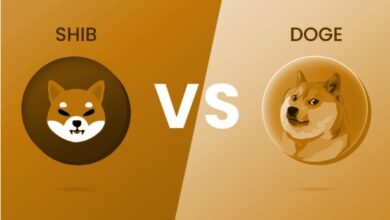Employee Monitoring Software: Enhancing Productivity and Ensuring Compliance in the Modern Workplace

In today’s fast-paced, tech-driven business landscape, A monitoring software for employees has emerged as a pivotal tool for organizations aiming to streamline their operations. This software plays a crucial role in boosting productivity, enhancing security, and ensuring compliance with industry regulations. As businesses increasingly adopt remote and hybrid work models, the need for reliable and efficient Employee Monitoring tools has never been greater. These tools not only help employers keep track of employee activities but also offer valuable insights that drive better decision-making. However, like any technology, it requires thoughtful implementation to balance productivity with privacy concerns.
Key Takeaways
- Employee Monitoring Software enhances productivity, security, and compliance in modern workplaces.
- Key features include time tracking, screen monitoring, and activity logging, which provide valuable insights for management.
- Benefits extend to both employers and employees, including improved remote work management and reduced operational costs.
- Addressing privacy concerns is crucial; transparency and ethical usage foster trust between employers and employees.
- The future of monitoring tools is evolving with advancements in AI, cloud-based solutions, and wearable technology.
What is Employee Monitoring Software?
Employee Monitoring Software is a digital solution that allows companies to track the activities of their employees during work hours. It captures various data points, such as time tracking, keystroke logging, website usage, application monitoring, and even screen snapshots, depending on the system’s sophistication. By providing detailed insights into employee behavior, this software aids in identifying inefficiencies, enhancing workforce management, and maintaining compliance with company policies.
The rise of remote work and the need for real-time productivity tracking has pushed businesses to embrace such technologies. This monitoring software for employees can be deployed across various industries, including healthcare, finance, IT, and manufacturing, providing tailored solutions to monitor workflows and secure sensitive data.
Key Features of Employee Monitoring Software
A well-rounded Employee Monitoring Software typically includes a variety of features designed to improve transparency and accountability. Some of the essential features are:
- Time Tracking: Monitoring how long employees spend on specific tasks or projects is essential for accurate payroll management and performance evaluation. This feature helps managers understand where time is being spent and if it aligns with the company’s goals.
- Screen Monitoring: One of the most widely used tools within monitoring software for employees, screen monitoring captures real-time activity by taking periodic screenshots or providing live video feeds of employee screens. This can be useful for ensuring employees stay on task during work hours.
- Activity Logging: This feature records the websites, applications, and files employees access during their workday. It’s useful for tracking unauthorized access or potential security threats.
- Reporting and Analytics: With integrated reporting tools, employers can generate detailed reports on employee performance. These insights help management make data-driven decisions regarding task allocation, productivity improvements, and team dynamics.
- Automated Alerts: Some advanced Employee Monitoring tools come with customizable alerts that notify managers of any unusual behavior or deviations from expected work patterns. This might include frequent breaks, unapproved software usage, or unauthorized file downloads.
Benefits of Employee Monitoring Software
The benefits of implementing a monitoring software for employees are manifold, and they extend beyond mere surveillance. When used ethically and transparently, it offers substantial value to both employers and employees:
- Increased Productivity: Monitoring tools provide real-time data on employee activities, allowing managers to identify bottlenecks and areas where employees may require additional support. This leads to more efficient task management and optimized time usage.
- Cost Reduction: By improving time management and workflow efficiency, businesses can reduce operational costs. The Employee Monitoring tool ensures that employees focus on priority tasks rather than wasting time on non-work-related activities.
- Enhanced Remote Work Management: In an era where remote work has become the norm, monitoring tools help maintain oversight, ensuring remote employees remain productive and engaged. It fosters accountability even when teams are geographically dispersed.
- Employee Development: Employee Monitoring Software can serve as a coaching tool by providing employees with performance data. By understanding where they are excelling or lagging, employees can take ownership of their development and adjust their work habits accordingly.
Addressing Privacy and Compliance Concerns
One of the primary concerns surrounding a monitoring software for employees is the issue of privacy. Employees may feel uncomfortable with the idea of being constantly watched, which can lead to reduced job satisfaction or distrust in management. Therefore, companies must ensure that monitoring is conducted ethically and in compliance with data protection regulations such as the GDPR (General Data Protection Regulation) and the CCPA (California Consumer Privacy Act).
To mitigate privacy concerns, companies should consider the following best practices:
- Transparency: Clearly communicate with employees about what activities are being monitored, why the monitoring is necessary, and how the collected data will be used. Transparency fosters trust and helps prevent misunderstandings.
- Data Security: The Employee Monitoring tool should employ strong encryption and secure data storage methods to protect the sensitive information it collects from unauthorized access.
- Limited Monitoring: To avoid overreach, companies should limit monitoring to work-related activities and refrain from tracking personal information. This ensures that monitoring stays within legal and ethical boundaries.
Use Cases for Employee Monitoring Software
Various industries have found innovative ways to leverage Employee Monitoring Software to boost efficiency and safeguard company assets. Here are some notable examples:
- Remote Work Management: With employees working from home or other locations, employers need to ensure that productivity levels remain consistent. Monitoring software provides real-time insights into remote employees’ work habits, ensuring that tasks are completed on time without micromanagement.
- Project Tracking in IT Firms: IT companies often manage complex projects with multiple team members. Monitoring software helps track how time is allocated across different phases of the project, ensuring that deadlines are met and resources are optimally used.
- Time Optimization in Retail: Retail businesses can use Employee Monitoring tools to track the time employees spend on inventory management, customer service, and other tasks. By analyzing this data, retailers can optimize employee schedules and reduce downtime.
- Financial Institutions and Compliance: In industries like finance, where security and compliance are critical, monitoring software helps track and document employee interactions with sensitive data. It ensures that all activities comply with regulatory standards, reducing the risk of fraud or data breaches.
Choosing the Right Employee Monitoring Software
Selecting the right Employee Monitoring Software can significantly impact your company’s ability to streamline processes and maintain compliance. Here are key factors to consider when evaluating different software options:
- Scalability: As your business grows, so will your monitoring needs. Ensure the software can scale to accommodate additional employees and monitoring features as required.
- Integrations: The software should integrate smoothly with other business tools such as project management software, payroll systems, and communication platforms like Slack or Microsoft Teams.
- User-Friendliness: A complex system can hinder adoption among employees and management alike. Opt for software that has an intuitive interface and provides easy-to-understand reports.
- Cost: Evaluate whether the software fits within your budget while offering all the necessary features. Some vendors provide flexible pricing models, including pay-per-user plans or customizable packages.
Best Practices for Implementing Employee Monitoring Software
Implementing Employee Monitoring Software should be done with care to ensure that it enhances, rather than disrupts, workplace operations. Here are some tips to consider:
- Open Communication: Discuss the implementation of monitoring software with employees before it goes live. Explain its purpose and how it benefits both the company and employees by providing clearer expectations and productivity support.
- Training and Support: Provide adequate training to employees on how the software works and address any concerns they might have about data privacy or micromanagement. Continuous support will ensure smoother integration into daily workflows.
- Periodic Reviews: Regularly review the data collected and adjust your monitoring practices if necessary. This helps you stay aligned with privacy regulations and ensures that the monitoring aligns with your business goals.
Trends and Future Outlook
The future of Employee Monitoring Software is intertwined with the broader technological advancements reshaping the workplace. Key trends that are shaping this field include:
- Artificial Intelligence (AI): AI-powered monitoring tools are becoming more popular for their ability to provide deeper insights through automated data analysis. AI can help predict productivity trends and suggest changes to workflow management.
- Wearable Technology: Some businesses are experimenting with wearables that monitor physical activity and health metrics, offering a new level of oversight on both productivity and employee well-being.
- Cloud-Based Solutions: As more companies move to the cloud, cloud-based Employee Monitoring tools provide greater flexibility, scalability, and remote access capabilities, allowing businesses to monitor teams across various locations.
Frequently Asked Questions (FAQs)
1. What is Employee Monitoring Software?
Employee Monitoring Software refers to tools that track employee activities during work hours. It includes features like time tracking, screen monitoring, and activity logging to improve productivity and security. This software provides insights into employee performance, allowing for data-driven decision-making.
2. How does Employee Monitoring Software benefit remote work?
In remote work settings, Employee Monitoring Software helps maintain productivity and accountability. It allows managers to track how time is allocated and ensure tasks are completed efficiently. This visibility is crucial for optimizing remote workflows and supporting employees in their roles.
3. Are there privacy concerns with Employee Monitoring Software?
Yes, privacy concerns are significant when implementing monitoring tools. Employees may feel uncomfortable with constant oversight, leading to distrust. Companies must ensure transparency about monitoring practices and comply with data protection laws to maintain a positive work environment.
4. What features should I look for in Employee Monitoring Software?
Essential features include time tracking, screen monitoring, activity logging, and comprehensive reporting tools. These features help managers gain insights into employee productivity and work habits. Additionally, consider scalability and ease of integration with existing tools when choosing software.
5. How can companies implement Employee Monitoring Software ethically?
To implement Employee Monitoring Software ethically, companies should prioritize transparency and communication. Inform employees about what data will be monitored and how it will be used. Additionally, focusing on positive reinforcement rather than punitive measures can create a culture of trust and accountability.
Conclusion
Employee Monitoring Software is rapidly evolving into an essential tool for businesses navigating the challenges of modern work environments. When used effectively, it can drive productivity, improve remote work management, ensure compliance, and even contribute to employee development. However, businesses must balance the advantages of monitoring with ethical considerations regarding privacy and transparency. By selecting the right software and implementing it thoughtfully, companies can foster a culture of accountability and performance while maintaining trust and compliance.




